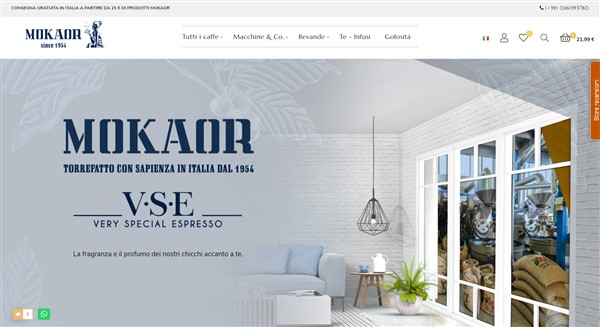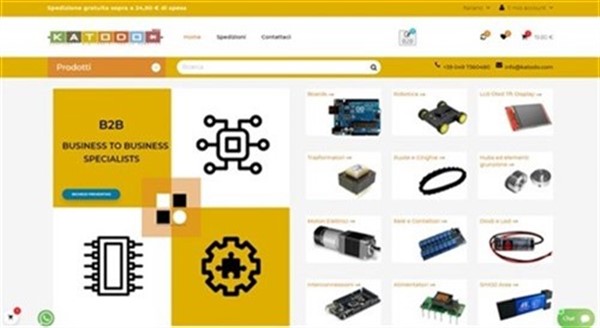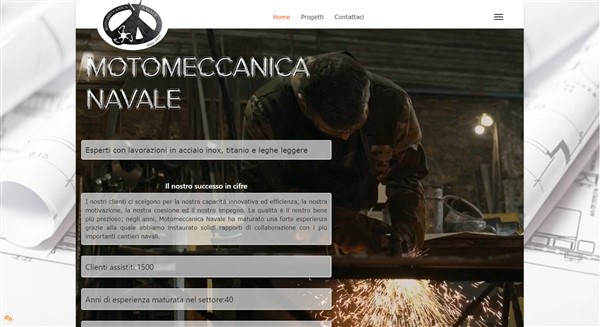Web Design to a new level
E-commerce development, platforms upgrade, business website, restyling, cms development
Prestashop
Open-source entirely designed to manage e-commerce, ideal for small and medium-sized businesses
Joomla
Powerful open-source CMS designed to create complex websites and online applications.
Wordpress
The most popular open-source blog platform to also create blogs or personal sites.
Seo - Sem
Two sides of the same coin! Organic results and paid results in synergy.
What is a CMS
Let's clarify the CMS - Click to learn more
It was August 6, 1991 when the first web page appeared on the world wide web or W.W.W. (maybe you don't know that the idea of the WWW was born at CERN in Geneva!), from there a whole series of protocols and languages for exchanging documents were born. The first websites were "static". Even today you can read this name on some website providers :-); they were called static because they were built with hypertext files in Html and therefore prepared previously and then published so that every time you had to alter a content it had to be done a priori with a software and then upload it to the server !! ... what a time guys!
Confusion often reigns supreme when you approach this world because in fact it is complex and it is easy to get lost among anachromes, different platforms, cms, e-cms, saas and so on. Let's try to clarify first of all on explaining what a CMS is which is currently the best solution for those who want to occupy a place in the network starting from a limited budget !. We leave out proprietary platforms or platforms built with custom-made code because those are usually adopted by large shops and portals that have huge budgets to devote only to their maintenance with dedicated IT departments. A CMS or Content Management System (content management system) as the name implies is a software that allows us to create, edit, publish content on the web. This macro category can be divided into two sub-categories: Saas (Software as a service or software as a service) and Open Source. The first category of Saas includes services offered by platforms such as BigCommerce, Shopyfy and others. In practice, the contents are inside a cloud and the customer pays a monthly subscription fee. They are e-commerce that allow you to sell your products but where it is also possible to create content so they are cms-saas. However, the customer does not have full control of the platform and therefore they are limited for certain types of customers and have a monthly cost. In the second Open Source category, on the other hand, we have software where the customer has full control of the website and its functions. However, the maintenance of the platform depends on the site administrator. Among the most famous are Woocommerce, Magento, Prestashop. The advantage of these platforms lies in the fact of having an open code (open-source) that can be downloaded for free and in practice the customer pays only the time necessary for the configuration of the platform and its customization. They have no monthly cost, it is an investment that is made only once, excluding the costs of any updates, perhaps due to the introduction of new features through the use of modules that are often on sale at low cost in the various marketplaces. These opensource software also need a hosting service on which to host the website whose cost is borne by the customer, but nowadays these costs have been significantly reduced so they have little impact on annual budgets. It must be said that in the case of platforms such as Prestashop, but above all Magento, hosting with certain characteristics is required, otherwise functionality problems may arise. In recent years I have specialized above all on Prestashop because I believe it has the best compromise between simplicity of use on the administrator / customer side and multiplicity of functionalities; that is, it is a software that is ideal for small / medium businesses, even international ones. There are thousands of modules that expand its functions and obviously it is possible to have another degree of customization. Magento requires a higher degree of skill from developers but above all it has high management costs.
E-commerce or electronic commerce is a sector that is growing year after year and that already occupies a slice of 14% of total world sales and forecasts point to 23% in 2023 !. This represents an opportunity for businesses looking for an online presence !!.
On the other hand, for personal sites, business sites, tour operators, real estate agencies or other types of websites other than e - commerce, I mainly use Joomla with an integrated page builder which greatly facilitates the updating of the site even by the customer!
Confusion often reigns supreme when you approach this world because in fact it is complex and it is easy to get lost among anachromes, different platforms, cms, e-cms, saas and so on. Let's try to clarify first of all on explaining what a CMS is which is currently the best solution for those who want to occupy a place in the network starting from a limited budget !. We leave out proprietary platforms or platforms built with custom-made code because those are usually adopted by large shops and portals that have huge budgets to devote only to their maintenance with dedicated IT departments. A CMS or Content Management System (content management system) as the name implies is a software that allows us to create, edit, publish content on the web. This macro category can be divided into two sub-categories: Saas (Software as a service or software as a service) and Open Source. The first category of Saas includes services offered by platforms such as BigCommerce, Shopyfy and others. In practice, the contents are inside a cloud and the customer pays a monthly subscription fee. They are e-commerce that allow you to sell your products but where it is also possible to create content so they are cms-saas. However, the customer does not have full control of the platform and therefore they are limited for certain types of customers and have a monthly cost. In the second Open Source category, on the other hand, we have software where the customer has full control of the website and its functions. However, the maintenance of the platform depends on the site administrator. Among the most famous are Woocommerce, Magento, Prestashop. The advantage of these platforms lies in the fact of having an open code (open-source) that can be downloaded for free and in practice the customer pays only the time necessary for the configuration of the platform and its customization. They have no monthly cost, it is an investment that is made only once, excluding the costs of any updates, perhaps due to the introduction of new features through the use of modules that are often on sale at low cost in the various marketplaces. These opensource software also need a hosting service on which to host the website whose cost is borne by the customer, but nowadays these costs have been significantly reduced so they have little impact on annual budgets. It must be said that in the case of platforms such as Prestashop, but above all Magento, hosting with certain characteristics is required, otherwise functionality problems may arise. In recent years I have specialized above all on Prestashop because I believe it has the best compromise between simplicity of use on the administrator / customer side and multiplicity of functionalities; that is, it is a software that is ideal for small / medium businesses, even international ones. There are thousands of modules that expand its functions and obviously it is possible to have another degree of customization. Magento requires a higher degree of skill from developers but above all it has high management costs.
E-commerce or electronic commerce is a sector that is growing year after year and that already occupies a slice of 14% of total world sales and forecasts point to 23% in 2023 !. This represents an opportunity for businesses looking for an online presence !!.
On the other hand, for personal sites, business sites, tour operators, real estate agencies or other types of websites other than e - commerce, I mainly use Joomla with an integrated page builder which greatly facilitates the updating of the site even by the customer!
Services
Creation of e-commerce platforms from scratch or migration of an existing e-commerce to the new Prestashop platform. Migration consists of transporting data from the old platform to the new one:
It goes without saying that particular care must be given to the 3 pillars of an e-commerce which are the home page, the product page and the checkout and this is always extremely personalized depending on the shop, on the other hand it is in the product page that you decide. a potential conversion. Nothing is left to chance!
- Catalog of categories and products with prices, images, attributes, SEO metadata, brands, suppliers
- Customer data with names, surnames, passwords, emails
- Customer orders with payments, carts, order references
- Shopping cart discounts and catalog discounts
- Taxes
- Localization such as currencies, countries, languages
- Redirect to new url if needed to maintain ranking
- Redesign of the customized graphic layout
- Audit - Check to be in compliance with the GDPR UE 2016/679 regulation
It goes without saying that particular care must be given to the 3 pillars of an e-commerce which are the home page, the product page and the checkout and this is always extremely personalized depending on the shop, on the other hand it is in the product page that you decide. a potential conversion. Nothing is left to chance!
Currently, any business that wants to expand its clientele, expand its sales market or simply make itself known must have an online presence. Whether it's a physical store, a freelancer, a public entity or a company, an online presence is a must.
With the various CMS platforms it is possible to build corporate websites, websites for freelancers such as lawyers, doctors, architects, psychologists, websites for travel agencies and tour operators, portfolio websites for professionals offering services and of course e-commerce for sell their products everywhere and more.
With the various CMS platforms it is possible to build corporate websites, websites for freelancers such as lawyers, doctors, architects, psychologists, websites for travel agencies and tour operators, portfolio websites for professionals offering services and of course e-commerce for sell their products everywhere and more.
Websites age and become obsolete for various reasons, including the fast evolution of the web and its related technologies! The average life of a site before it becomes obsolete can be counted in the palm of your hand !. Just think that there are still many websites that are not suitable for browsing with mobile devices such as mobile phones or tablets, here these sites are no longer considered in main engine searche like Google and it is as if they did not exist !.
Restyling is a fairly complex process because there are various aspects to take into account such as eg. the case of an already established brand where the image is important for which attention is needed to maintain those characteristics that then constitute the appearance or appeal. Often we have to do with websites belonging to the era of counters, background music or three-dimensional effects, here in this case everything has to be redone of course !. Rethinking a layout must also take into account a possible change in the image of the entity it represents, which is why this operation is not a simple graphic remake but requires much more attention to the processes used.
Restyling is a fairly complex process because there are various aspects to take into account such as eg. the case of an already established brand where the image is important for which attention is needed to maintain those characteristics that then constitute the appearance or appeal. Often we have to do with websites belonging to the era of counters, background music or three-dimensional effects, here in this case everything has to be redone of course !. Rethinking a layout must also take into account a possible change in the image of the entity it represents, which is why this operation is not a simple graphic remake but requires much more attention to the processes used.
The upgrade of a platform is done for various reasons including mainly the resolution of important security-related bugs for example because we need new features or even a restructuring of the contents. When the changes are light and need a simple rearrangement, you opt for an upgrade while if the changes are substantial it is better to start from scratch on a new platform. We could take the example of a used car in which we spend money to keep it running despite the constant presence of problems when instead we could buy a new, safer and more modern one, in the end, doing the math, it is better to start from scratch and rebuild everything on a new one platform.
Completed projects
Some works made around the world



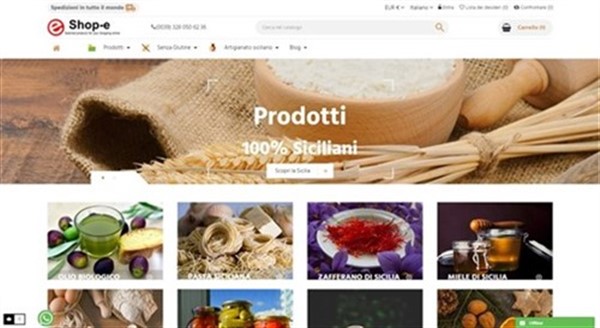

Eaglesrock tours & safaris
Namibian tour operator specialized in tours and safaris in African countries.
Website
Lojaortopedica
E-commerce dedicated to the sale of orthopedic material on the European market.
Website

Kissme Cosmetics Ltd
Kissme Cosmetics Ltd is a Milanese startup in the international cosmetics sector.
Website

Cool Tech LLC
Cool Tech LLC Californian shop selling accessories for special cars of various brands.
Website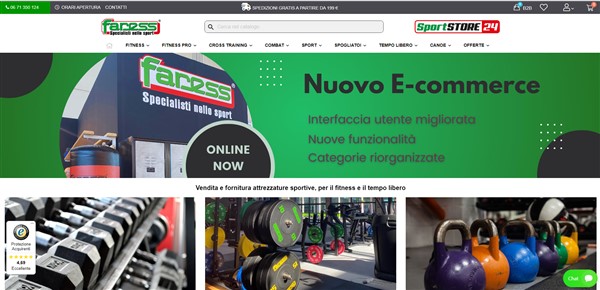
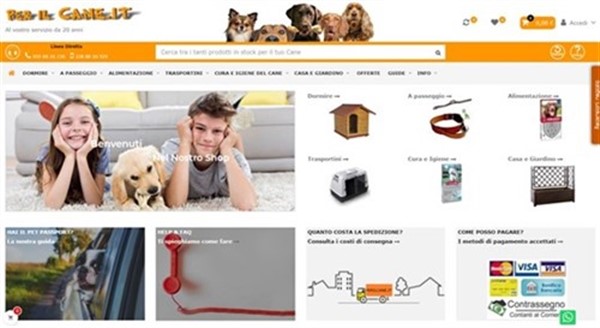
Perilcane
National shop specializing in the sale of products for dogs and cats such as kennels and accessories.
Website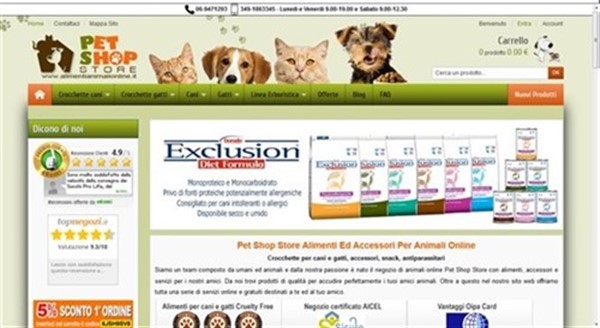

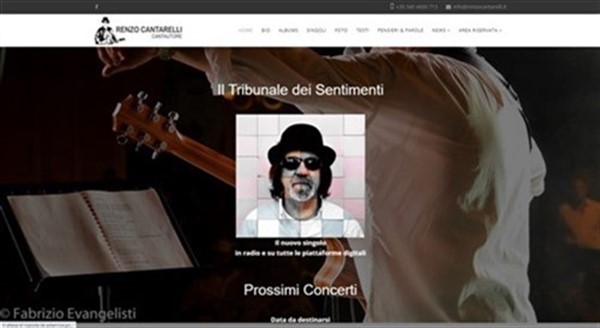
Renzo Cantarelli
Official site of the Italian singer-songwriter Renzo Cantarelli with various thematic areas.
Website
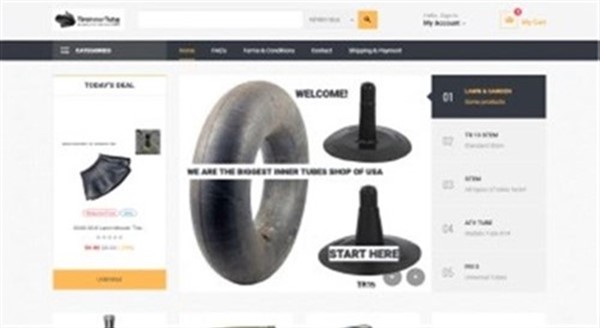

Luxado Outlet
Italian e-commerce focused on the sale of children's footwear of various brands.
Website